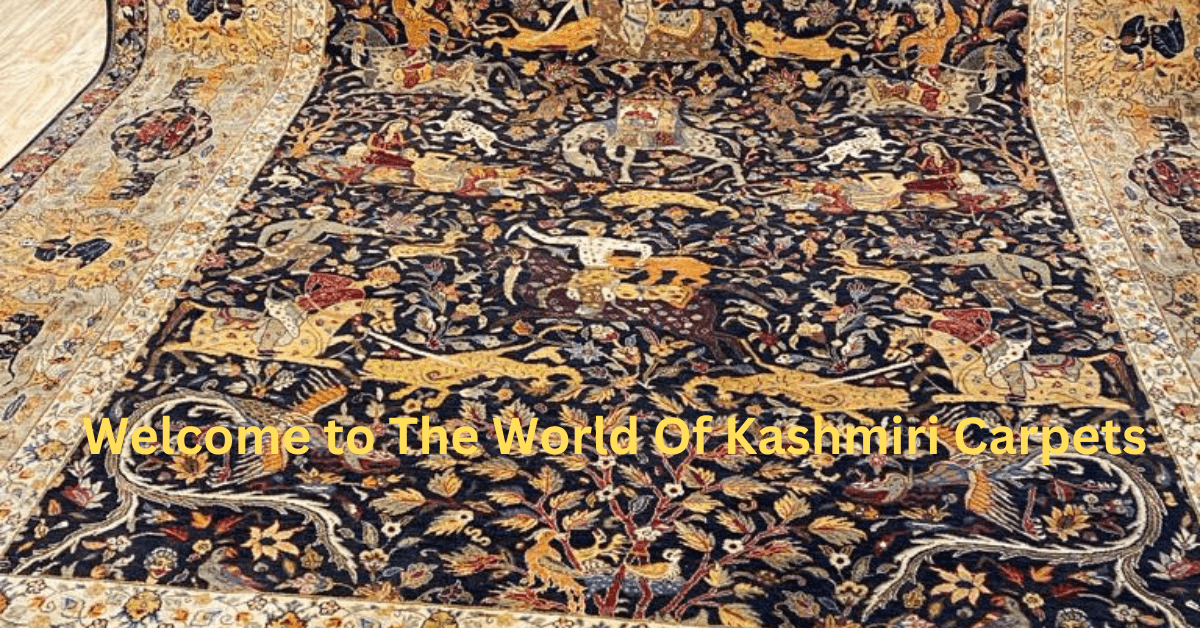
Kashmir carpets history- Area Rugs is a true masterpiece of craftsmanship, combining traditional design with modern aesthetics. Made by skilled artisans in the Kashmir region of India, these area rugs are known for their luxurious textures, intricate patterns, and rich, vibrant colors. The wool used in their production is of the highest quality, giving area rugs a soft, luxurious feel, Kashmir carpets are a testament to the elegance and beauty of traditional craftsmanship, a touch of sophistication and luxury to any home or office.

Jammu and Kashmir, is state of India and is a piece of paradise on earth, is the and is situated mostly in the Himalayan mountains. Kashmir is an epitome of natural beauty, and is famous all over the world for it. You can indulge your senses in the many lakes, gardens and hill stations that attract thousands of tourists every year. You will give many reasons to come back for more. As a Best Tour Guide in India and a Art lover have an opportunity to spend time with the artisans and their families came to know the Kashmir carpets history Art & Designs of area rugs.
Table of Contents
Kashmir Carpets History: Tracing the Origins of Area Rugs
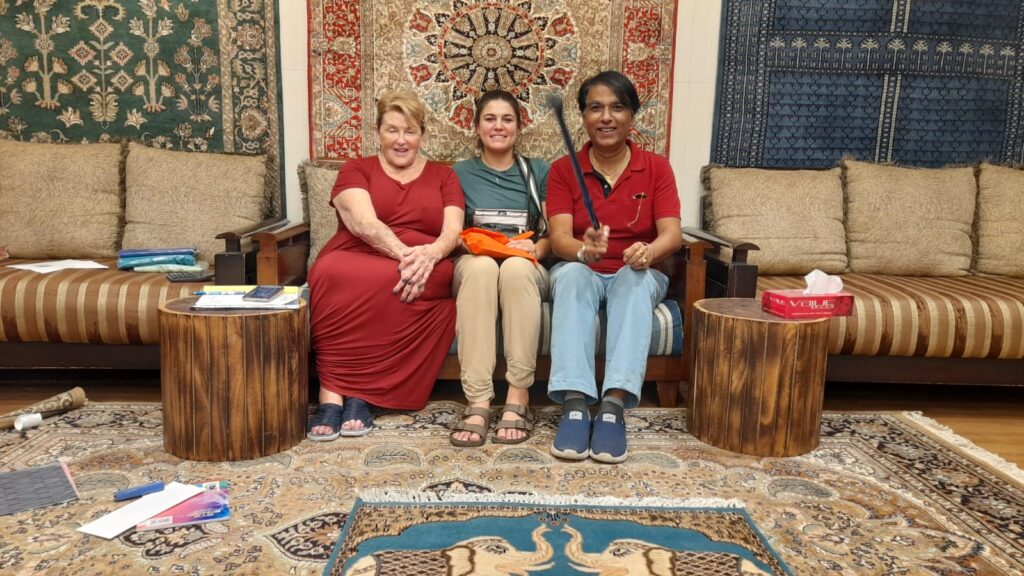
The Kashmir carpets history Art-Timeless Tradition of Handmade Beauty is a rich tapestry of tradition and innovation that spans thousands of years. The earliest hand-knotted carpets date back to the 4th century B.C., and the art of carpet weaving has been passed down from generation to generation since then. Kashmir carpets, in particular, have a long and storied history, with the region becoming a center of excellence for carpet weaving in the 15th century. The materials used in the creation of Kashmir carpets are sourced locally, with wool and silk obtained from sheep and silk-worms in the region. The weavers use horizontal looms, which have been used for centuries and are still used by nomads today. The techniques used in weaving the carpets have evolved over time, but the essence of the craft has remained the same.
One of the distinguishing features of Kashmir carpets history is the intricate designs and patterns that are woven into each piece. The weavers employ a variety of techniques to create different textures and decorative pictures, resulting in carpets that are truly works of art. The carpets are highly valued for their exceptional quality and beauty, and they continue to be sought after by collectors and interior designers around the world.
The Kashmir carpets history is a testament to the enduring appeal of handmade Area Rugs. The art of carpet weaving has survived for thousands of years, and the weavers of Kashmir continue to carry on this proud tradition. The history of Kashmir carpets is woven into the very fabric of the region, and they remain an important part of its cultural heritage.
Kashmir Carpets History: Journey of Area Rugs Through Time
Hand-made Kashmir carpets and Area Rugs have a long and storied history in India, dating back to the 15th century. The origin of the carpet, however, remains shrouded in mystery, as the art object in question is deteriorating over time.
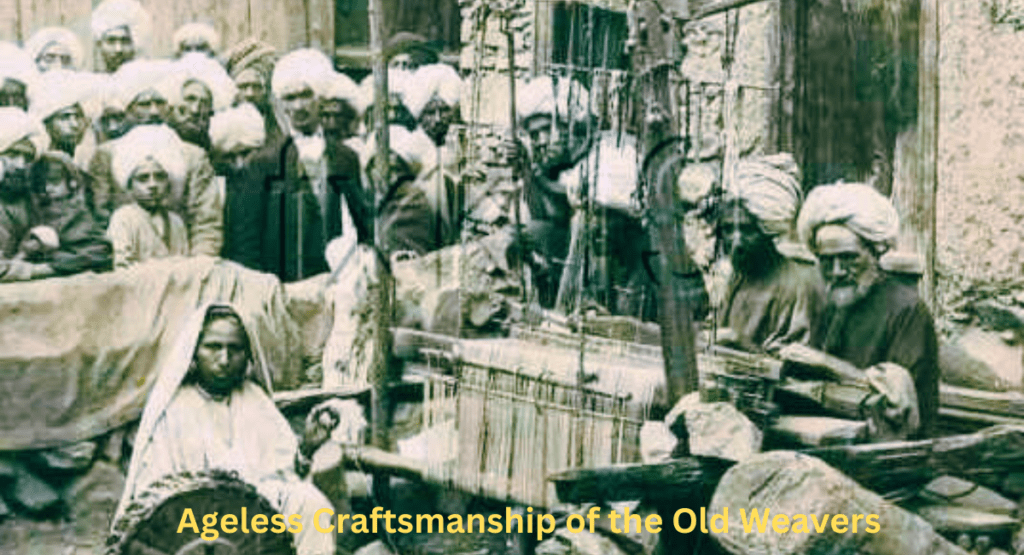
According to the Kashmiri carpets history, the art of weaving Area Rugs was introduced to the region by a Sufi mystic named Hazrat Mir Syed Ali Hamdani. He is said to have brought with him a group of artisans skilled in the art of carpet weaving, and they began to create exquisite carpets using local materials and traditional techniques.
The origin of hand-knotted carpets, locally known as “Kal baffi,” is believed to date back to the 15th century, and over time, the craft attained a high degree of perfection. Each carpet starts its journey as a canvas stretched on a frame, with the weavers using a variety of techniques to create intricate designs and patterns that are truly works of art.
The Kashmiri carpets history is a testament to the enduring appeal of handmade craftsmanship. Each carpet is a unique masterpiece that reflects the skill and creativity of its weaver. The carpets continue to be highly valued for their exceptional quality and beauty, and they remain an important part of India’s cultural heritage. Despite the challenges posed by the passage of time, the art of carpet weaving in Kashmir continues to flourish, as new generations of weavers carry on this proud tradition.
Kashmir carpets history is steeped in tradition and legend. According to Kashmiri lore, the art of carpet weaving was introduced to the region by a Sufi mystic named Hazrat Mir Syed Ali Hamdani. He is said to have brought a group of artisans skilled in the craft, who began to create exquisite carpets using local materials and traditional techniques.
Over time, the art of Rug weaving in Kashmir evolved and attained a high degree of perfection. It is said that Sultan Zain-ul-Abidin, also known as Budshah, played a pivotal role in establishing the Kashmiri carpet industry. He brought skilled carpet weavers from Persia and Central Asia to train the local inhabitants.
The art of carpet weaving was often passed down from father to son, with each generation adding their own unique touch to the craft. Today, Kashmiri carpets are highly prized for their exceptional quality and beauty. Each rug is a unique masterpiece that reflects the skill and creativity of its weaver.
Despite the challenges posed by modernization and the passage of time, the art of rug weaving in Kashmir continues to flourish, with artisans continuing to create exquisite rugs using traditional techniques. The Kashmir carpets history is a testament to the enduring appeal of handmade craftsmanship and the rich cultural heritage of India.

Kashmir Carpets History: Most Popular Designs of Area Rugs

Inspired by Persian carpet weaving, Kashmiri weavers initially created their own designs and shapes of Area Rugs, which were classified as oriental carpets. Over time, however, Kashmiri artisans improved upon this blessed craft and inspired new local designs and designs. Although thousands of different shapes and images are used in Kashmir carpets, here are some famous features of Kashmiri carpets.
Gulabdar – The Kashmiri Rose. Tree of Life – The majestic tree depiction home to the native birds.
Gumm – The maze pattern. Bagdar – The Garden View. All Over – An area spread floral pattern.
Dabdar – The box pattern. Lotus – The Lotus flower inspired pattern.
Khatam Band – Intricate Wood Art inspired motif.
Hamdan, Ardabil, Kashan, Kirman and Tabriz are other famous carpet motifs that are actually inspired by the Persian Art.
“Art is Boarder less and Values of Art is Time less”

Kashmir Carpets and Area Rugs an Emotional Story Behind Threads of Love


“I was a little girl when my uncle taught me the art of Kashmir carpets weaving,” Jamruda told New Lines during an interview at her home. Perhaps that is how she became so adept at reading the Taleem (coded instructions for weaving), which may have required years of professional training. Hana teaches it to other women in the village, although education and carpet weaving is a perishable art.
The Kashmir Carpets History: Passed Down Through Generations

The art of carpet weaving area rugs in Kashmir is passed down from generation and most of them prefer to weave traditional Area Rugs and carpets by hand. The process of making a Kashmir carpets is labor intensive and involves a lot of time and different steps, starting with the cultivation, treatment and dyeing of silk or wool, pattern setting, weaving and then adding the final touches.
The Kashmir carpets history is a rich and fascinating tale that spans centuries. From the time of the Mughal Empire to the present day, these carpets have been treasured for their exquisite beauty and fine craftsmanship. One of the most important chapters in Kashmir carpets history is the impact of European tastes and colonialism. The Universal Exhibition of London in 1851 showcased shawls and carpets from Kashmir, which were highly sought after by European collectors. The Kashmir carpets history is a testament to the enduring appeal of these beautiful works of art.

How long do hand-knotted Kashmir carpets and Area rugs
Traditional Hand-knotted Kashmir Carpets, are a valuable collection that can be passed down from one generation to the next. Traditional handmade Kashmir carpets stand the test of time and can last for decades and even a lifetime, provided they are properly cared for and maintained.
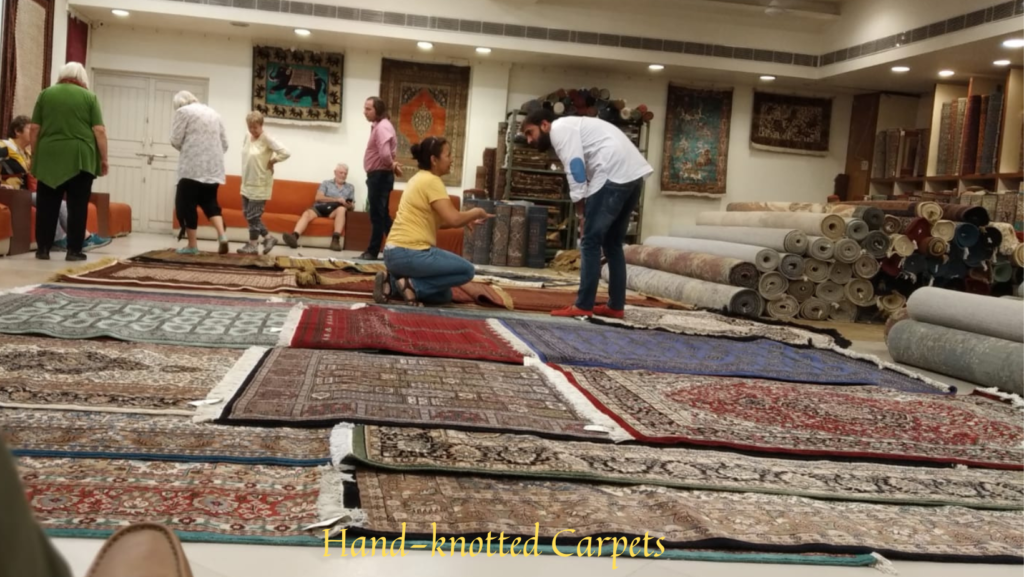
Hand-knotted Kashmir Carpets, are really durable and can last a long time. They are made from the finest wool so it makes them stronger than other types of carpets available in the market. The maintenance costs of these carpets are also low, so you will not spend much to keep these carpets clean all the time. Kashmir also excels in manufacture of silk carpets. Designs and patterns in Kashmir carpets continue to be predominantly inspired by classical Persian and Central – Asia rugs. Thus Kashmir has been creating Kashan and Kirman, Tabriz and Isfahan, Meshed and Bokhara with such superb artistry that these can compare with the best in the regions of their origin. attractive local variations have also been evolved. Kashmir carpets usually come in the sizes of 2’x3′; 2 1/2’x4′; 3’x5′; 6’x4′; 6’x9′
Kashmir carpets Area Rugs: Art Making Quality and Introduction.
The Kashmir Carpets history is woven into the very fabric of these exquisite masterpieces. In the Kharkhana, weavers work together, often with families sitting on the rug during different stages of carpet production. The process is a three-step labor of love, involving a designer, dyer, weaver, and businessman. Each knot is made by the most skilled weavers, one at a time. The materials used are pure silk, wool, bamboo silk, and cotton, resulting in unique and high-quality handmade carpets. A rug’s flatter ness and density of knots per square inch on the back determine its quality, with one knot per square inch being considered better quality. It can take an average of two years to complete an Area Rug, but the result is a masterpiece that can be walked on and appreciated for generations.
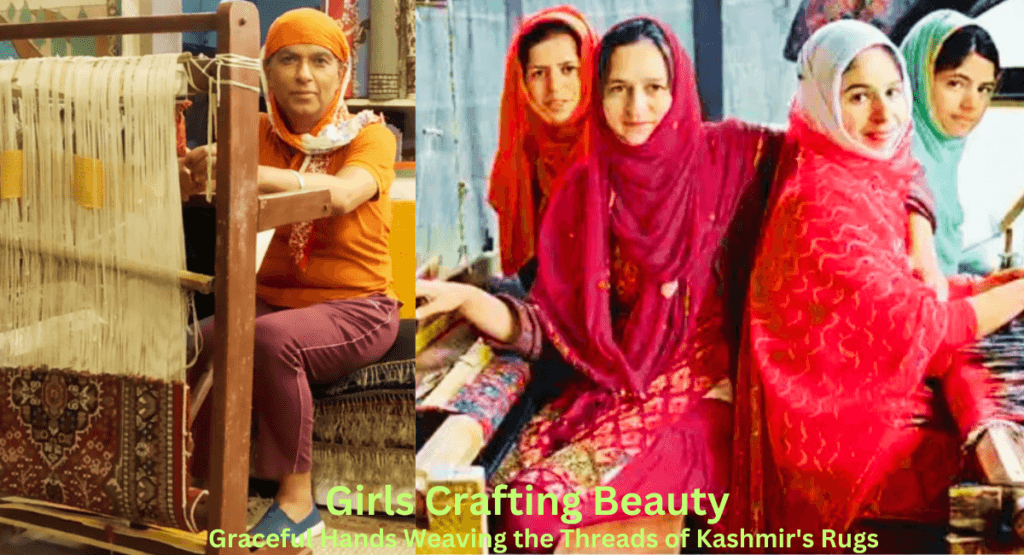
In Kashmir Carpets History: Government Initiatives
The government is taking steps to revive the Hand-knotted Kashmir area rugs in Jammu and Kashmir. Some young Kashmiri people are working towards introducing calligraphy and other modern designs in hand knotted carpets weaving. Handicrafts are being promoted more effectively in this state so that buyers from all over the world are once again attracted to Kashmir carpets. Such efforts will surely increase the sales of these carpets and help in improving the economy of Kashmir.

Kashmir Carpet Technology Institute Srinagar

Indian Institute of Carpet Technology (IICT), Srinagar, Baghe-Ali-Mardan Khan,Nowshera, Srinagar-190011, Jammu & Kashmir (India). Kashmir Carpet Weavers at The Indian Institute of Carpet Technology (IICT) has established eight centers in different parts of Kashmir to conduct training for artisans. New fabrics and newer designs have been introduced in carpet weaving.
Exploring the Kashmir Carpets History: The Artistry and Tradition

Hand-knotted Kashmir Carpets are from 200 knots to 900 knots/sq. inch both in wool & silk yarn have attained such excellence that they rank amongst the finest in the world. The loom used in Kashmir carpets weaving is composed of two horizontal wooden beams between which the wrap threads are stretched, one beam in front of the weaver and the second behind the first. The difference between a hand knotted carpets and other hand woven rugs lies in the fact that short lengths of the thread or yarn are tied to wrap chains to form the pile of the carpet. These are commonly called knots though it is a loop rather than an actual knot.[ Kashmir Carpets and Rugs ]
There are different types of knots in Kashmir carpets, the Farsi baff and the Persian system known as Sehna, or Sinneh, knot is originally used. Very simple tools are used to thread these knots, a wood or Metal comb to push knots and weft tightly together and pair of short scissors to cut the pile of the carpet to an even form once it is finished. Kashmir. Some very fine silk carpets in different sizes have been created with density of knots as high as 3600 knots per sq. inch but these are rare Exhibits, of skill and mainly made for display or museum pieces.
The designs are reveals itself along the weft lines in wool or silk, while the warp is drawn in cotton. Quality and hence value, is determined by the number of knots to the square inch and fineness of the material used. The assortment of Kashmiri Hand Knotted Carpets is crafted from premium quality Silk / Wool. Provide a stylish and regal look to the modest décor with the Hand Knotted Carpets. Clients can avail from us the Handmade Carpets in diverse dimensions, hues and textures.
Kashmir carpets History: Connecting to the Divine Through Art.

Dua [Prayer] carpets were also woven in the kani technique (twill tapestry), with Burns emphasizing the uniqueness of these particular kani weaves and their confusion with the original rugs, who wrote in 1840: “Let me mention Kashmir carpets here. Kani Since prayer rugs were always made in pairs, in fact, the famous identity pairs of Mughal carpets are still found in the evidence available today, although it is not known whether they were made in a systematic way. It is more likely that Kani Namaz carpet was always a pair of things.
Lahore was to be one of the busiest cities in India after Kashmir, as Fazal said “… there are over a thousand workshops”; Of course, the looms numbered in the thousands. This means that the letter strongly establishes Lahore and Kashmir as centers of imperialist weaving, and further suggests that the production of royal carpets, at least in Pashmina, involved the joint efforts of the two regions.
Francois Bernier, witnessing the shawl industry first hand, emphasizes this point, and admits that “Great pains have been taken to manufacture similar shawls in Patna, Agra and Lahore, but notwithstanding every possible care, they never have the delicate texture and softness of the Kashmir Carpets.
Love and Legends Woven in Kashmir Carpets History

In tales of old, the magic of falling in love has been associated with magic carpets. Kashmir Carpets history area rugs has been enriched with stories of magical carpets that have mobilized lovers and made dreams come true throughout the centuries. The Bible itself is replete with references to magic flying rugs, and legend has it that the queen of Sheba sent King Solomon a magical carpet of green silk adorned with gold and jewels as a symbol of her love. Others believe that it was God himself who sent the magic carpet to the king, infusing it with divine powers to fulfill his wishes.
The magical allure of falling in love has been intertwined with the enchanting stories of magic carpets. The tales of Aladdin and Jasmine soaring on their flying carpet have captured the hearts of many. From ancient times, the Bible itself has featured references to these magical flying rugs, and legends abound of their power to mobilize lovers and make dreams come true. Even the great love of the prince has been told in tales like the Persian folk tale of Sheherzada, who used her storytelling skills to seduce the king. Her tales of magic flying carpets, jinns, and mighty lamps captured the king’s heart for 1001 nights, until he fell so deeply in love that he made her his queen. The history of Kashmir carpets is also steeped in the art of storytelling and the expression of deep emotions through intricate designs and vibrant colors.
The rich history of Kashmir carpets and area rugs is filled with fascinating stories. One such story tells of a clever weaver who saved the day for King Balsh. When a clumsy thief accidentally destroyed the king’s magnificent diamond, the king’s page scrambled to gather the scattered pieces and summoned the king to the area. The king gazed at the fragments of the diamond scattered across the landscape, feeling hopeless. However, the crafty carpet weavers of the palace came up with a solution. They wove a new carpet using silk in the colors of precious jewels, creating a magnificent work of art that was even more breathtaking than the original diamond. The king returned home overjoyed, and the Kashmir carpets history was enriched with yet another tale of their incredible beauty and ingenuity.
Kashmir Carpets: Hamadan Area Rugs
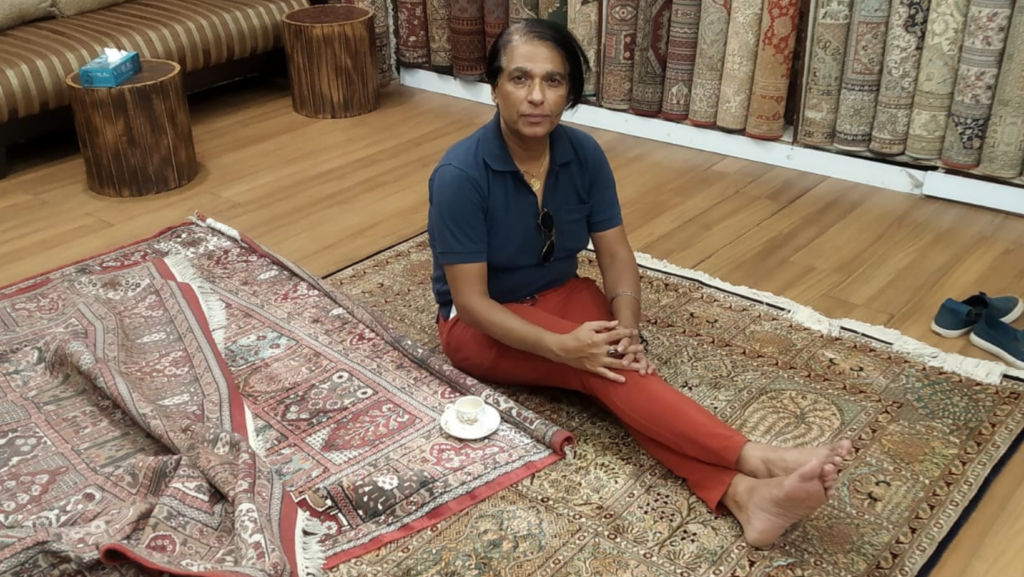
Hamdan is a collective term for a variety of carpets in the vicinity of the city of the same name. Hamdan carpets are handmade, high quality hand knotted carpets made in and around the western Iranian city of Hamdan, known as the city of knots. The city of Hamdan is home to many poets and cultural figures and is said to be one of the oldest continuously inhabited cities in the world. Hamdan has always been known for its handicrafts such as leather, ceramics, and carpets, including the renowned Hamdan carpets, which unfortunately are rare. However, the Kashmir carpets history has been rich with similar designs that have gained popularity all over the world and are suitable for every taste and home.
Kashmir Carpets History: Tribal Area Rugs, A Glimpse into the Past
Thanks for reading The Wonders of “Tribal Style Area Rugs” Inspired by Gypsy Artisans.
This is a somewhat broad category and it is sometimes difficult to know how to classify a particular Area Rug. In short, tribal Rugs and carpets are carpets woven by nomadic or semi-nomadic tribal weavers
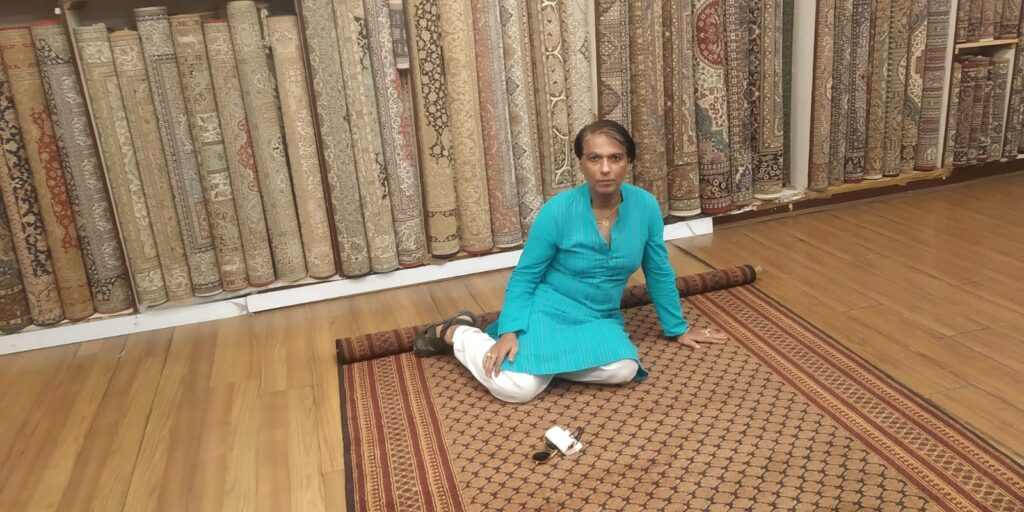
Tribal Rugs and carpets are known for their more geometric shapes. The combination of designs and colors was a truly indigenous inspiration. The origin and meaning of the design is also shrouded in mystery. Some rugs have distinctive zoomorphic designs and patterns that are clearly influenced by plants and flowers. But many designs are extremely abstract. Certain stimuli are known to confer magical and protective properties. It is widely believed that the art and craft of handmade carpets originated from the nomadic Central Asian tribes. These nomads used to make wool from their sheep. Kashmir carpets history and Rugs is also rich, as it is believed that the art of Rug weaving was introduced to the region by Persian immigrants during the Mughal era. The Kashmiri weavers adapted the traditional Persian designs to suit the local tastes and preferences, resulting in a unique style that is still popular today.
Kashmir Carpets History of Hawa Mahal Area Rugs
Enchanting and charming, Our Antique Persian handmade Glorious Hawa Mahal Wind Palace Pistachio Green wool Rug is an easy way to refresh the look of even your most traditional interior spaces. Allow its soft, soothing color scheme to enhance the look of your favorite areas while also putting an enchanting twist on your existing décor.

Hawa Mahal is a palace located in Jaipur, India. Constructed of red and pink sandstone, it is situated on the side of the City Palace, Jaipur and extends to the Women’s Room. Its five-story exterior looks like a honeycomb with 953 small windows adorned with intricate lattices called jharokhas. The original purpose of the lattice design was to allow royal women to observe everyday life and festivities in the lower streets without being seen, as they had to adhere to the strict “veil” rules, which required them to wear face masks. was. He was forbidden to appear in public without cover.
C.I.E. the Masters in Kashmir Carpets History

Cottage Industries Exposition Ltd. Can’t remember how old the business is, although CIE as it is today was formalized in 1978. His ancestors, he learns, were in the business of selling silk carpets, and he inherited it. “It must be two or three generations old,” he says, trying to put the legacy in some kind of perspective. The small business, which probably cost a few lakhs at the time, is today a thriving business worth billions only in silk rugs. Today, CIE has outlets across the world and in major cities in India. CIE web site.
“Art is never finished, only abandoned.” – Leonardo Da Vinci.
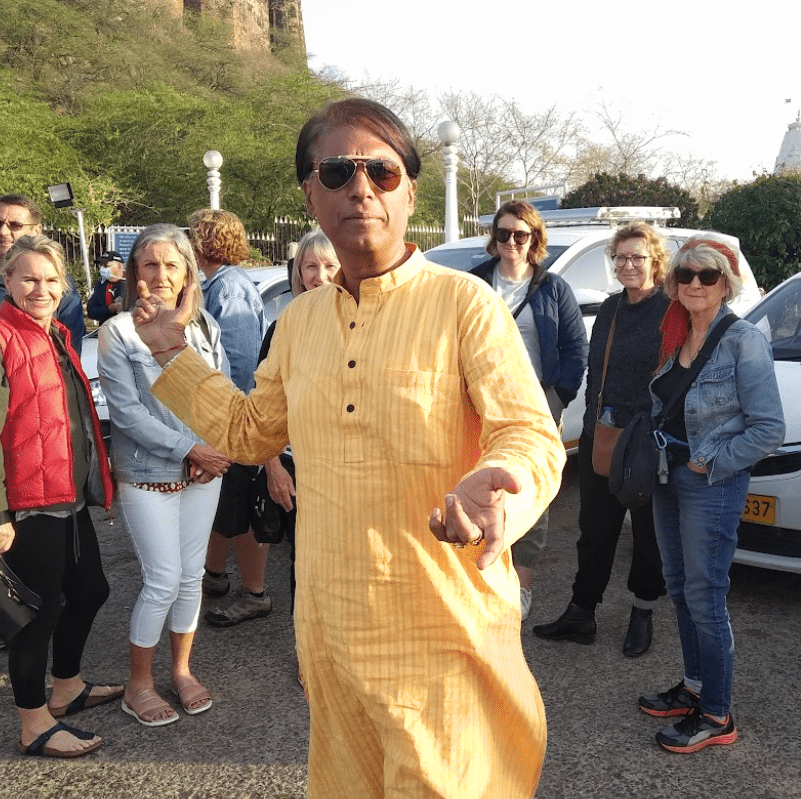
One thought on “Beautiful Area Rugs Kashmir Carpets History Guide”
Comments are closed.